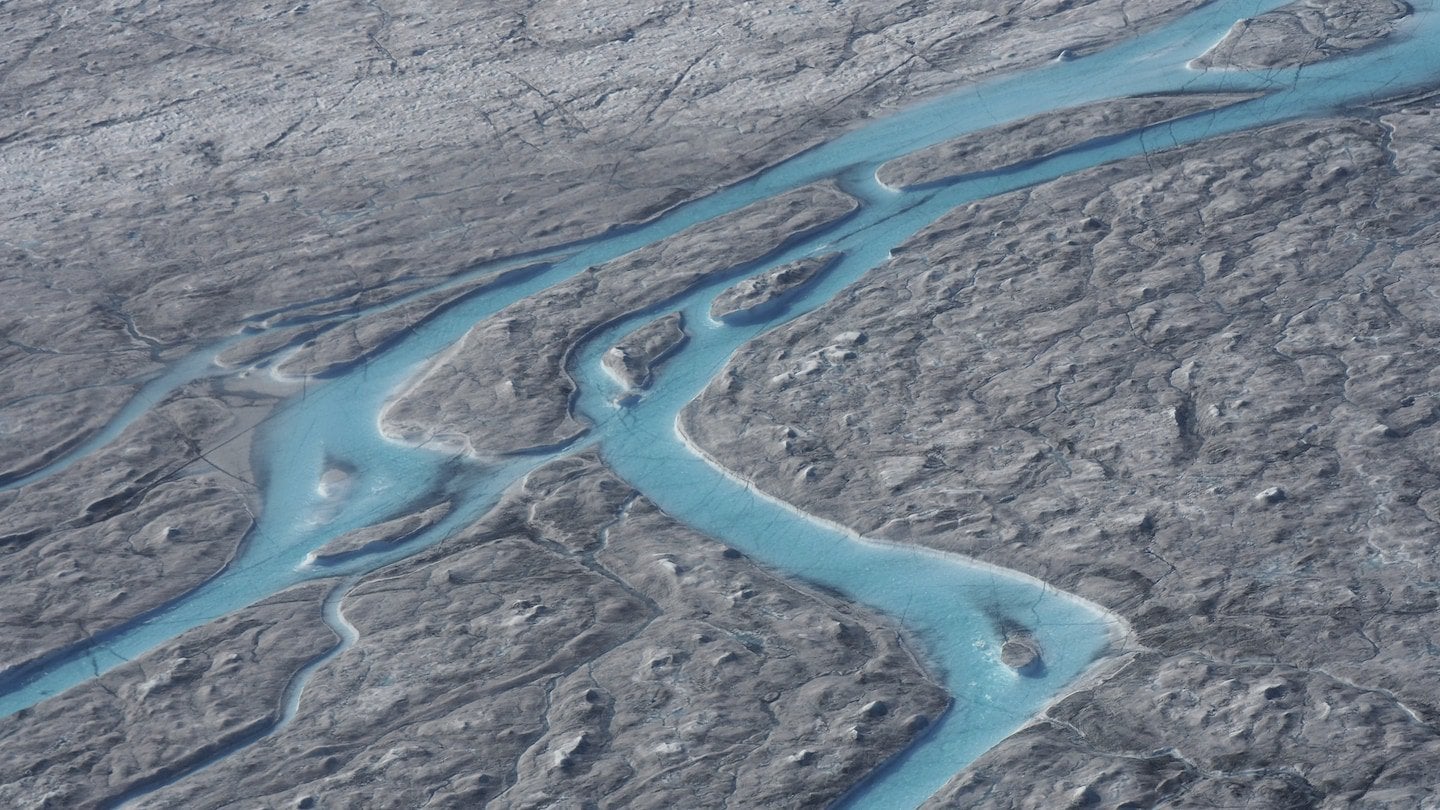Dark Zone: What is causing destructive algae to thrive on the ice sheet of Greenland? Does the truth lie in the finer details? Things don’t come much finer than dust!
This ever-expanding “Dark Zone” was explored a few years back, where some info was gleaned. However the mind-melting details were a mystery… until now. It seems dust blown in from icy rocks plays a key role in the dramatic process.
The Dark Zone occurs during Summer to the west of the sheet, turning that section from dazzling white to murky grey. Recent years have seen it arrive earlier and, perhaps more worryingly, go on for longer.
Greenland’s Strange ‘Dark Zone’ Is Becoming a Huge Problem For All of Us https://t.co/Zn5l00BeG6 pic.twitter.com/jeptu74bHh
— Jonah Jones (@jazzyjonahj) April 13, 2018
The algae is the reason for the shift in shade, and it’s been known about for a while. PYHS.org notes the aquatic plants are “normally green, but when exposed to constant sunlight, they create dark-colored sunscreens to protect themselves from damaging ultraviolet rays.”
As the Greenland ice sheet is the second biggest of its kind on the planet – behind its Antarctic counterpart – this is bad news. Why? Because now the sheet struggles to reflect the sun, absorbing heat instead of shooting it back skywards. This is referred to as “albedo”.
A team made up of international experts have recently published new findings in the journal Nature. The study is led by Dr Jenine McCutcheon of the University of Leeds.
iflscience.com mentions the algae’s main constituents are Ancylonema nordenskioeldii, plus species coming under the Mesotaenium genus. With the planet’s ecology under unprecedented strain, working out what lay behind the algae was critical.
“Although glacier ice algae cause up to 13% of the surface melting in this region,” the study notes, “the controls on bloom development remain poorly understood.” What’s driving these unpredictable growths?
The team examined samples over the course of 2 years. It became clear the dust was having an effect on the algae. And there appears to be more dust than usual – as covered by iflscience.com, climate change is melting ice, revealing more rock. This in turn dries out in the sun.
The phenomenon also generates more powerful winds, delivering a payload of dust to the cold surface. But what exactly is it delivering? The answer is hydroxylapatite, a phosphate mineral that the algae cant get enough of.
So the phosphorous is feeding the algae, right? Well, probably. Dr McCutcheon says in the study: “photosynthesis rate of the ice algae improved significantly when we provided them with a source of phosphorus”. From this the scientists conclude the mineral “may be coming from the hydroxylapatite” found in the dust.
What other ingredients are there in the Dark Zone? IFL Science reported on drone analysis of the sheet in 2018. Experts found the Zone featured “wildfire-derived black carbon”, in addition to powdery ‘cryoconite’, “made of ice algae remnants and tiny sediments that are carried by the wind.”
The growing size of the Zone has been observed from the beginning of the century. Live Science reports that the Greenland sheet is losing 500 billion tons of its mass annually. And by the looks of things, ice melting through climate change is leading to further loss of ice through the alarming, plant-based reaction.
The area is vast – 656,000 square miles or as the site puts it, three times the size of Texas! – but even nature has its limits. It’s hoped the latest findings can help dive into the urgent issue of Earth’s rising sea levels. Working out where algae might grow is going to be vital in tackling a planet-sized problem.
Another Article From Us: A Massive Anglo-Saxon Cemetery and Treasure Trove Has Been Discoverd
Now the algae’s deadly diet is known about, the data can be applied to reducing and ultimately understanding a slowly-unfolding disaster…
